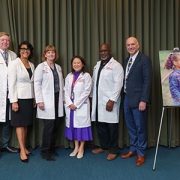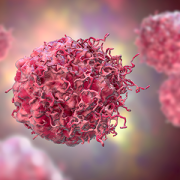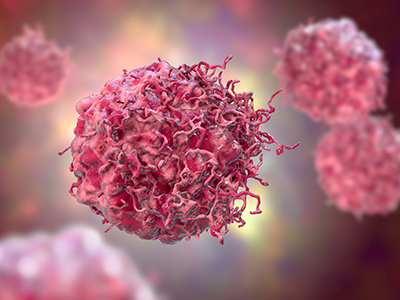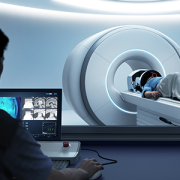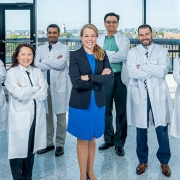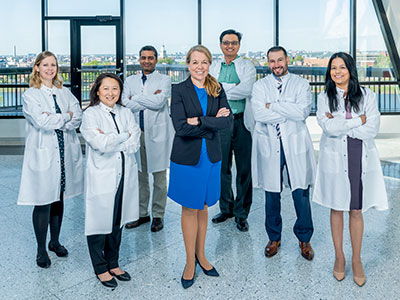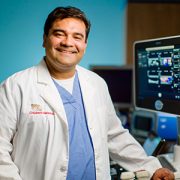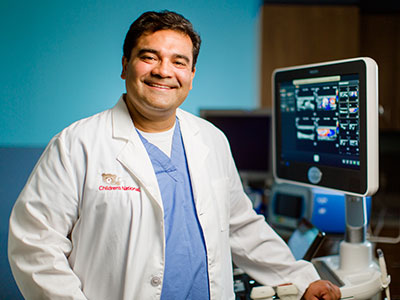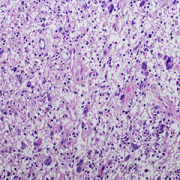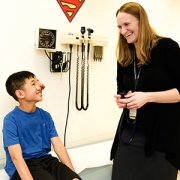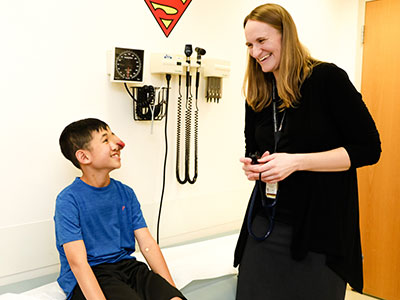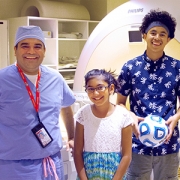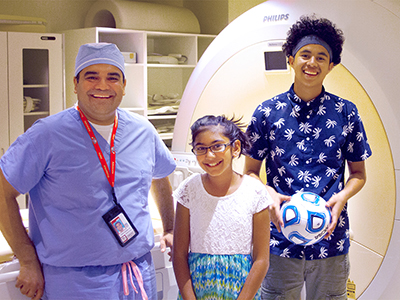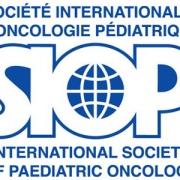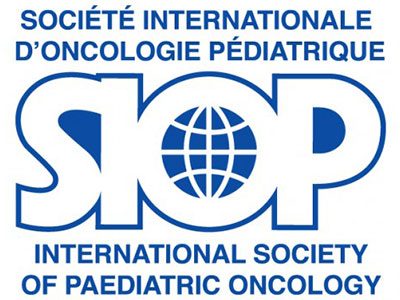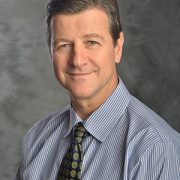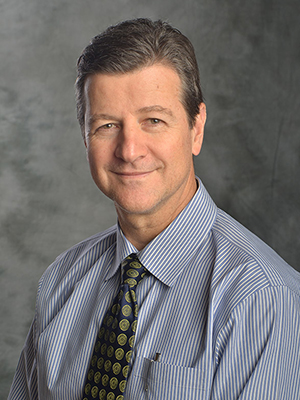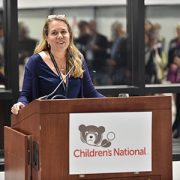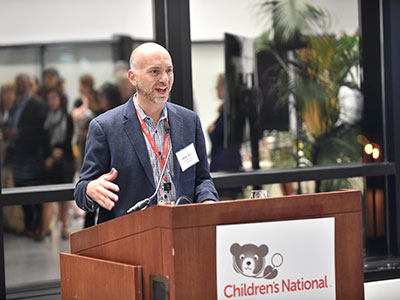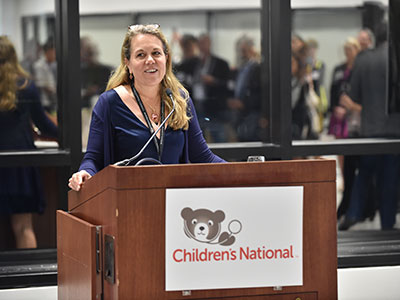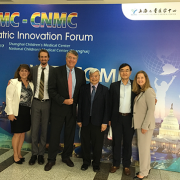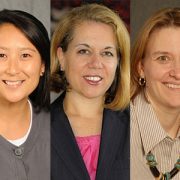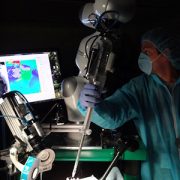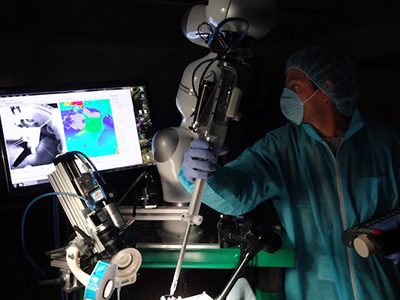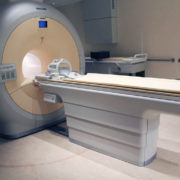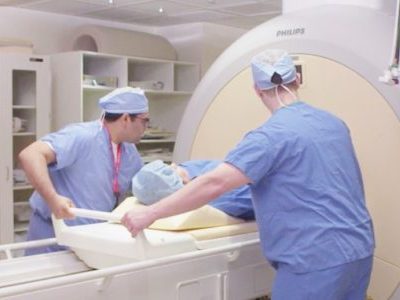Honor bestowed on AeRang Kim, M.D., Ph.D.
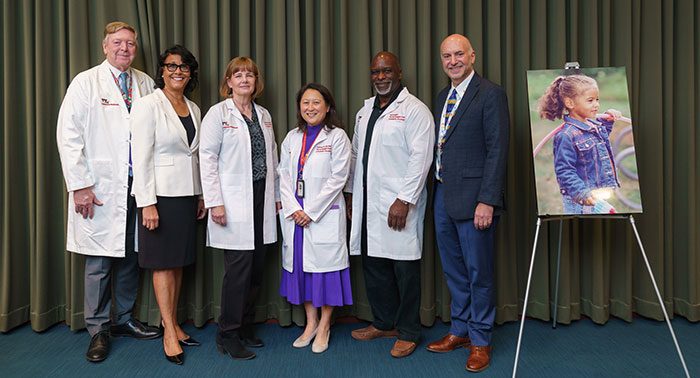 On November 1, Children’s National Hospital installed AeRang Kim, M.D., Ph.D., as the first holder of The Lexi Speight Chair in Pediatric Oncology.
On November 1, Children’s National Hospital installed AeRang Kim, M.D., Ph.D., as the first holder of The Lexi Speight Chair in Pediatric Oncology.
Dr. Kim is clinical research director for the Oncology Division within the Cancer and Blood Disorders Center at Children’s National. She is a tenured professor of pediatrics at the George Washington University School of Medicine and Health Sciences.
The big picture
Dr. Kim joins a distinguished group of Children’s National physicians and scientists who hold an endowed chair. Children’s National is grateful to generous donors who altogether have funded 49 professorships.
Professorships support groundbreaking work on behalf of children and their families and foster new discoveries and innovations in pediatric medicine. These appointments carry prestige and honor that reflect the recipient’s achievements and donor’s commitment to advancing and sustaining knowledge.
Why it matters
Since arriving at Children’s National in 2010, Dr. Kim has played a pivotal role in our solid tumor program. She leads the renowned multi-disciplinary Sarcoma Clinic, which includes a comprehensive team of oncologists, nurses, orthopedic surgeons, radiologists, a genetic counselor and a physical therapist. It is one of the few of its kind in the country. Dr. Kim’s dedication and leadership have been instrumental in earning Children’s National recognition as a Sarcoma Alliance Center of Excellence.
Dr. Kim leads clinical trials evaluating new pediatric solid tumor treatments across multiple institutions. She pioneers precision approaches using targeted drugs, advanced devices and cell therapies. Her innovative work attracts numerous grants, including a recent $1.3 million from the Department of Defense.
“The future of cancer treatment is in precision medicine,” says Dr. Kim. “As The Lexi Speight Chair of Pediatric Oncology, I will explore new ways to design clinical trials to accelerate development of new therapies for solid tumors. This could change the paradigm for pediatric cancer treatment.”
Moving the field forward
The Speight family, through their vision and generosity, are ensuring that Dr. Kim and future holders of this chair will launch bold, new initiatives to rapidly advance the field of pediatric oncology, elevate our leadership and improve the lifetimes of children with solid tumors.
“When Lexi died, we had a decision to make about how to channel our grief,” Cyndi Speight, Lexi’s mom, remembered. “And do what we could to help other children and families from experiencing what we did.” And so, Cyndi, her husband Petr, and their daughter Sam established The Lexi Speight Chair in Pediatric Oncology with support from community partners in loving memory of Lexi. The Speight family started Laps for Lexi, an annual 5K run/walk that raised money for both pediatric cancer at Children’s National and a scholarship at Sandy Spring Friends School. This successful event ran for 13 years, bringing hope to children and families. The Speight family’s dedication and passion for advancing solid tumor care ensures that Lexi’s legacy lives on in our pursuit of better treatments for children.


